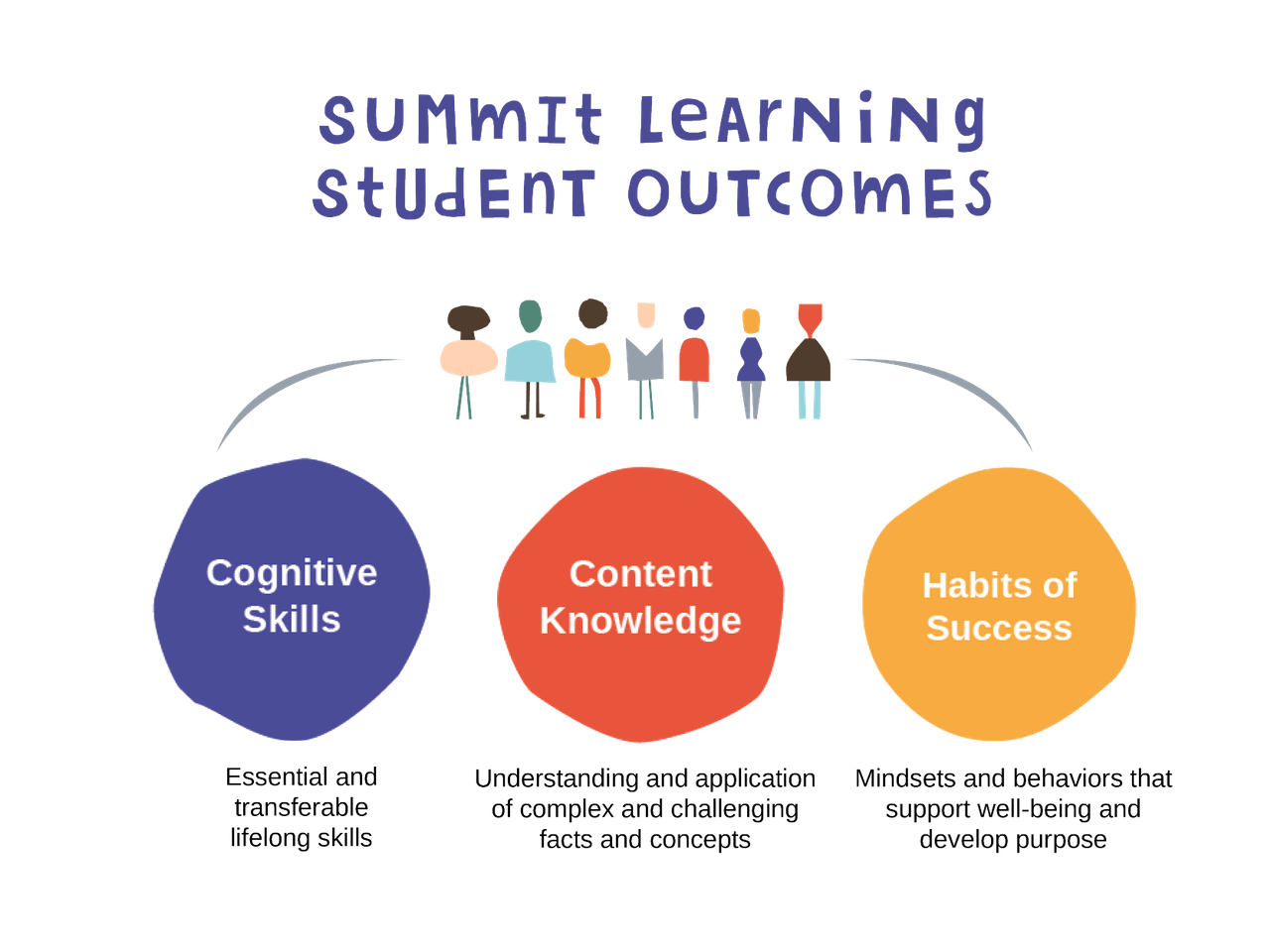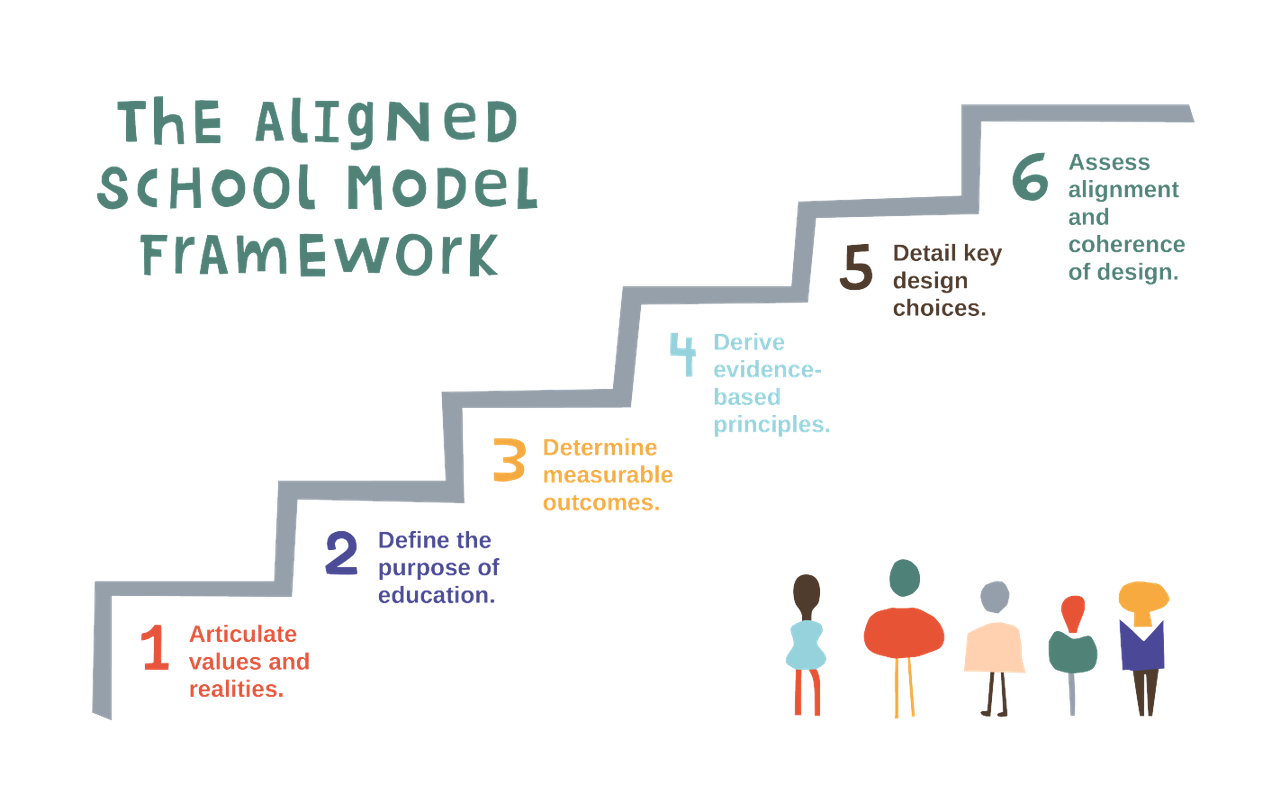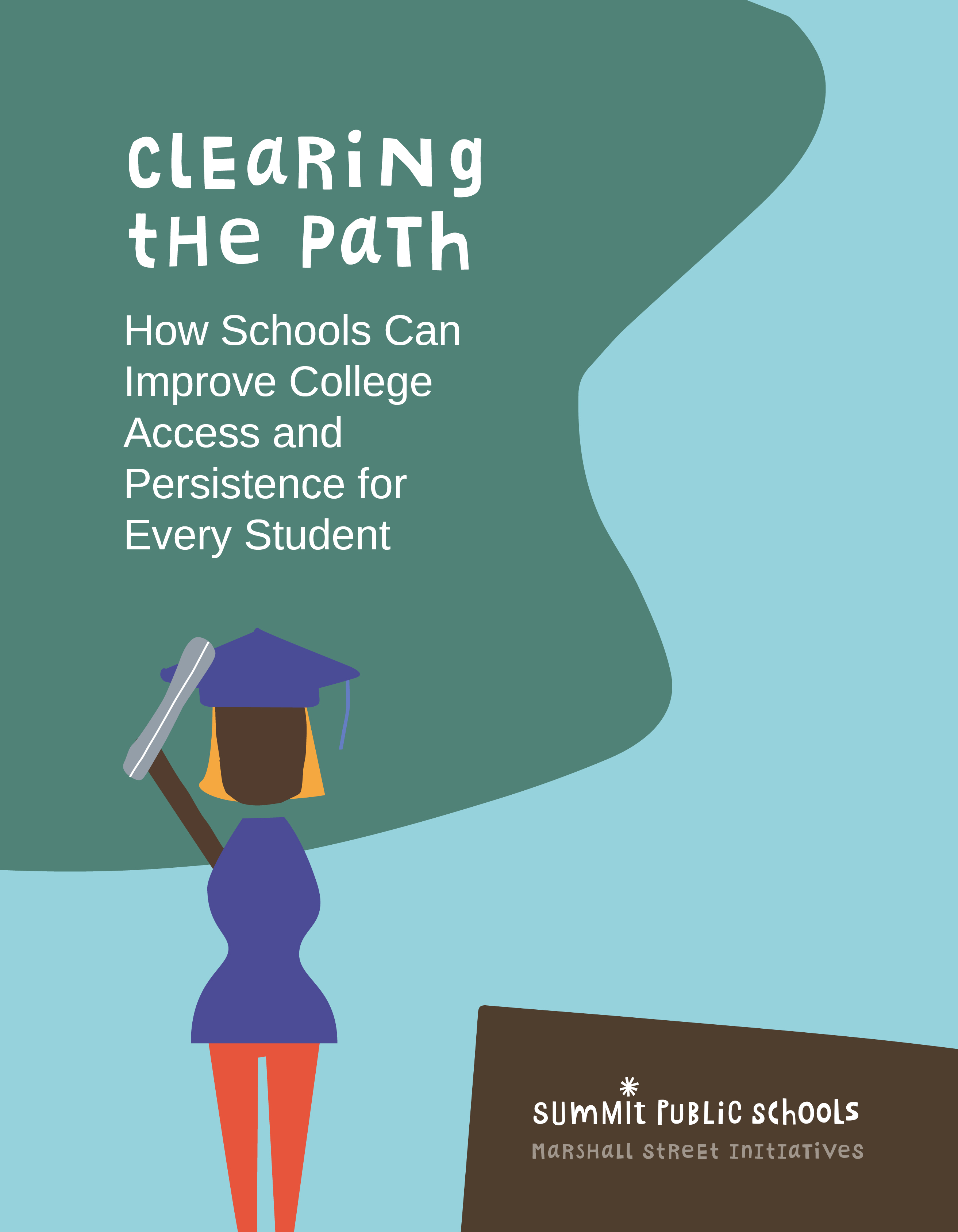The Science of Summit
The Science of Summit
Want to dive deeper into the Summit model? The Science of Summit is a groundbreaking white paper, 15 years in the making. In it, we share our beliefs about young people, about the promise of public education, and Summit’s principles for school design rooted in the science of learning.
Since our founding in 2003, we have held ourselves accountable to a vision that every student should be equipped to lead a fulfilled life. Summit has worked in partnership with nationally-acclaimed learning scientists, researchers, and academics to develop a model that supports that vision.
The Science of Summit combines our core values, what science tells us on how students learn best, and cutting-edge research into a school experience that is tailored to every community’s needs.
Measurable Outcomes that Drive Student Success
Every single element of the Summit model is grounded in what science tells us about how students learn best. In The Science of Summit, we translate the science of learning into the intentional design of our schools to achieve student success in three outcomes: Cognitive Skills, Content Knowledge, and Habits of Success.

In The Science of Summit, you’ll learn about:
- Skills such as communication, critical thinking, collaboration, and creativity are essential for success in college and career, according to the Partnership for 21st Century Skills. Multiple prominent curriculum frameworks and standards — Common Core State Standards, Next Generation Science Standards and the Center for Curriculum Redesign — advocate teaching these skills. We prioritize Cognitive Skills in grading above all else. Working with Stanford’s Center for Assessment, Learning, and Equity (SCALE), Summit developed a single Cognitive Skills Rubric to assess student work. The rubric outlines 36 Cognitive Skills such as asking questions, interpreting data, and synthesizing sources. Students spend the majority of class time immersed in real-world projects that require this higher-order thinking.
- Students need a broad Content Knowledge base in order to put Cognitive Skills to work, as outlined in research from The ABCs of How We Learn. Daniel Willingham, Professor of Psychology at the University of Virginia, tells us students must understand academic subjects more deeply than a web search can provide. We enable students to advance through material at their own pace and move on only when they demonstrate proficiency. This method aligns with findings from Harvard Graduate School of Education Professor and Scientist Todd Rose.
- Social-emotional learning is inextricably linked to academic learning. At Summit schools, students learn Habits of Success — a set of skills, mindsets, dispositions, and behaviors grounded in the social nature of learning. To prepare our students for college and career success, we adopted prominent educational psychologist K. Brooke Stafford-Brizard’s 2016 Building Blocks for Learning as our framework. The approach outlines 16 key social-emotional learning skills for comprehensive development. Our goal is to help students develop and show habits independently, along with the ability to transfer these to a variety of life situations. One way these mindsets and behaviors take shape is in three commencement-level ready habits — self-direction, curiosity, and purpose — that set up a student for a life of well-being.
Our Framework for Designing a School Model
Beyond detailing evidence for each of our student outcomes, The Aligned School Model Framework presents a framework for designing school models aligned to a school’s articulated purpose of education and grounded in evidence.

The Aligned School Model Framework was developed at Summit Public Schools
The Aligned School Model Framework presents six steps for designing a school model that consistently and reliably predicts success for all students, when implemented effectively. Summit used this framework to inform the design of our own model and hope it will be helpful for the greater education community.
This framework is critical to ensuring Summit schools meet the needs of all students. We hope it can do the same for others across the nation. We encourage our peers to use this framework to articulate their own school models.
Read the full white paper Aligned School Model Framework (PDF) (Aligned School Model Framework – Accessible Version Google Doc) now to learn more about the science behind our approach and the framework we used to design our schools.
Clearing the Path to College
In their senior year of high school, our students face a decision about college that is high-stakes and complex. The decision begins long before 12th grade and affects students long after they graduate. From 2017-19, we interviewed Summit alumni, current students, parents, mentor teachers, researchers, and practitioners to better understand what drives students as they navigate the journey to and through college.
From those nearly 200 user interviews, supported by quantitative data and secondary research, we built a detailed driver framework that educators and program designers can use in their own contexts to ensure they are removing key obstacles to college for every student.
Read the full white paper:

The Clearing the Path white paper presents:
- Key drivers of success and challenge on the path to and through college
- A discussion of students’ perceptions of school, their future dreams, the role of family, and the decisions about post-high school life they need to make
- A student-centered Concrete Next Step Driver Framework for use by educators and program designers
- A tool to diagnose the student experience in K-12 or college contexts
These research findings are a roadmap for Summit schools as we prepare every student for success in a four-year college or university. Just as with the Aligned School Model Framework, we hope this framework can help others across the nation. We encourage our peers in K-12 and college to leverage these findings for innovation, reflection, and the design of equitable programs and environments that clear the path for every student.
Read the full white paper:

